Capture of Union Troops Historical Marker; 4th Battle of Boonville (Price's Raid) 1864
Introduction
Text-to-speech Audio
This marker in front of downtown Boonville's Thespian Hall marks the location of U.S. defenders as they were captured by a larger force of Confederate raiders under the command of Sterling Price on October 16, 1864. There is also a monument in the Sunset Hill Cemetery commemorating the U.S. troops who perished. The battle was fought in a location different from the previous three Civil War battles near Boonville. This 1864 skirmish underlines the town's importance as a crucial crossroads in central Missouri during the conflict. The battle itself, albeit small by Civil War standards, was an important step in the six weeks of Confederate General Price's Missouri Expedition, during which he led an army of 12,000 in a failed bid to claim the border state for the Confederacy once and for all. Had he succeeded, it may have been a powerful political blow against the reelection of Abraham Lincoln that November, and could perhaps have led to Southern independence. The battlefield is not preserved, but other important moments in Price's Raid are well-marked.
Images
Confederate General Sterling Price, a former governor of Missouri who commanded in the region for much of the war. After the Confederate surrender, he fled to Mexico and lived briefly in a colony for ex-Confederates in Veracruz.
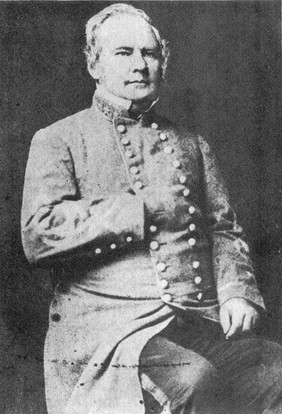
Confederate Major General James Fagan, commanding one of three of Price's divisions during the raid. He conducted the Rebel rearguard at Boonsville. Despite his chosen side during the war, afterward he was appointed a US Marshal by President Grant.
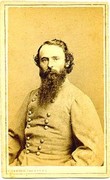
Confederate Colonel Sidney Jackman, who commanded a force of Confederate cavalry during the 4th Battle of Boonville. He would figure prominently in the coming campaign; his brigade was often entrusted with crucial positions and tasks.
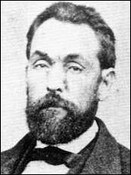
Union General John B. Sanborn just before the war. He commanded Union forces at Boonville and would distinguish himself again later in the campaign at the Battle of Westport, where Price's army was vanquished.
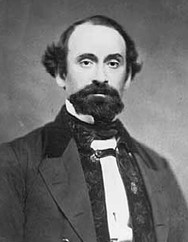
Albert Castel's book is an invaluable resource on the war in Missouri and Kansas.
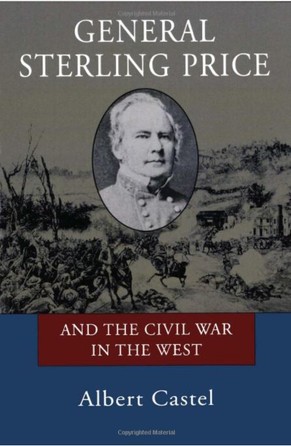
Marker designating location of U.S. defensive works in Boonville
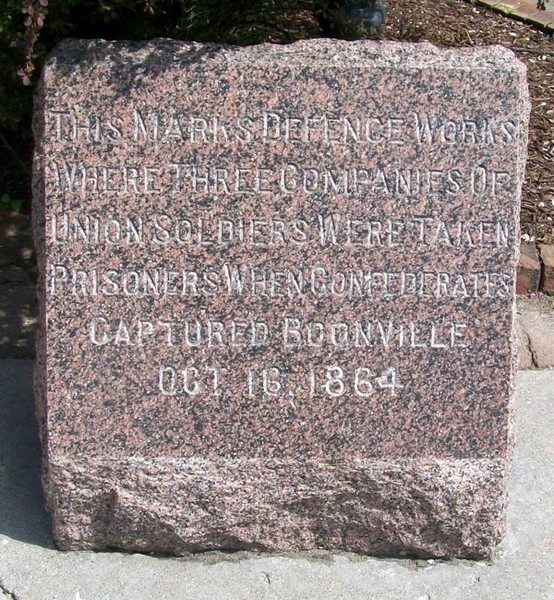
Backstory and Context
Text-to-speech Audio
By the end of the summer in 1864, the tide of the American Civil War had turned against the Confederacy. Union general William T. Sherman was devastating the Southern heartland on his "March to the Sea," and Robert E. Lee's Confederate army was under siege in Petersburg, Virginia. Noticing that the border state of Missouri, which harbored many Confederate sympathizers but had never officially seceded, was lightly defended at the time, Confederate General Kirby Smith conceived a plan for a fast but powerful raid into Missouri, seizing St. Louis and Jefferson City with the goal of installing a Confederate governor. This coup would hopefully contribute to the defeat of Abraham Lincoln in the upcoming U.S. Presidential elections and open the way for an armistice and Southern independence.
Confederate General Sterling Price was sent with 12,000 troops into Missouri on September 19, 1864. While stronger numerically than the scattered Union garrisons in the state, nearly a quarter of his force were deserters who had been apprehended and reconscripted. Thousands lacked weapons, tents, shoes, or other essentials. Price experienced initial successes against the surprised Yankees, but the Union commander of the Department of Missouri, William S. Rosecrans, began to organize a response. Had Price progressed rapidly to St. Louis he may have taken it with little struggle, but he decided to assault a 1,200-man garrison at Fort Davidson in Pilot Knob, Missouri on Sept. 27. Despite enjoying vast numerical superiority, Price's badly organized attack suffered monstrous casualties--nearly a tenth of his overall strength--and failed to take the fort. Adding insult to injury, the Union garrison slipped out overnight, blew up the fort, and led Price's pursuit on a merry chase before successfully elduing his grasp. Thus far, the Confederate invasion had little to show for itself.
By this time, Rosecrans had reinforced St. Louis, and Price knew it was impractical to assault the city. The Confederates swung northwest toward Jefferson City, still hoping to take the capital and install their gubernatorial aspirant, Thomas C. Reynolds. But Price advanced too slowly once again, arriving outside Jefferson City on Oct. 7, 1864--one day after the Union garrison had received reinforcements to the tune of 2,500 men and a new commander, General Alfred Pleasonton. Though Price still outnumbered the Federals, Missouri's capital was heavily fortified and would have proved too costly to assault. Price formed up to attack but withdrew after a brief artillery duel and moved his army northwest to Boonville, succeeding only in surprising and capturing the 300-man Union garrison there.
Less than three weeks into his raid, Price had failed to achieve his primary objectives. Missouri's two major cities remained in Federal hands, and Confederate governor-in-exile Reynolds had no state over which to preside. So Price moved to complete a secondary set of objectives: reinforce his columnn with militia troops drawn from pro-Confederate counties, then cut a destructive swath through eastern Kansas, which was firmly in Union hands.
Boonville was instrumental to the former since it lay in the heart of "Little Dixie," a region of central Missouri with a high percentage of slaveholding estates and largely Confederate sympathies. An important junction on the route from Kansas City to Jefferson City and St. Louis, Boonville had already seen three battles prior to 1864--all of which were defeats for the Confederates. While the military action at the 4th Battle of Boonville proved the exception and led to the capture of a small number of troops and local home guard units, it did little to reverse the demoralizing downward spiral of Price's Raid.
The Confederate commander spent two days in the town organizing over a thousand (mostly unarmed) militia recruits who flooded in from the surrounding countryside. But Price's men soon alienated the sympathetic populace with unruly behavior and looting, which had been a problem since the earliest days of the raid. Governor-in-exile Reynolds later wrote:
"It would take a volume to describe the acts of outrage; neither station, age, nor sex was any protection. Southern men and women were as little spared as Unionists..."2
One of Price's ablest commanders, Brigadier Gen. M. Jeff Thompson, wrote of having his hands full disciplining his own troops, and lamented that,
"The plunder of Boonville nearly completed this demoralization [of Price's army] for many officers and men loaded themselves, their horses and wagons with 'their rights' and now wanted to turn Southward and save what they had...the hotel occupied as General Price's own headquarters was the scene of public drunken revelry by night."2
When Price withdrew from Boonville on Oct. 11, he took with him the last able-bodied Confederate men of the region and much of the remaining local support and goodwill for the Confederate cause, having plundered through many of the area's towns and farmsteads in what can best be described as a raid and not an organized and disciplined effort to rally pro-Southerners.
The battle itself was less dramatic. After Price retreated from Jefferson City's formidable defenses, General Pleasonton had sent on his trail some 2,500 cavalrymen under General John Sanborn. Pleasonton lacked the numbers to engage Price in pitched battle but instructed Sanborn to maintain contact with the enemy. The threat to Price's rear would keep Pleasonton apprised of the enemy's whereabouts, and encourage Price to deviate westward toward Kansas. There Rosecrans and Pleasonton hoped to trap him between their forces and those of General Samuel Curtis of the Department of Kansas.
To that end, Sanborn aggressively tracked Price's progress until Price's rearguard under Major General James Fagan was forced to engage. A short, inconclusive skirmish followed, bleeding over into more fitting. Sanborn’s men were forced back, but the trap was closing around Price, as General Pleasonton's prediction of Oct. 11 began to take shape:
"[Price] will have to go south through Kansas, as he cannot subsist his force through the western tier of counties of this State; they are so destitute, so I am reliably informed."1
After several more battles and three more weeks of marching, Price would be defeated decisively in Kansas at Westport and Mine Creek, shattering Confederate military power in the region for the duration of the war.
Cite This Entry
Warmack, Kyle and Clio Admin. "Capture of Union Troops Historical Marker; 4th Battle of Boonville (Price's Raid) 1864." Clio: Your Guide to History. September 25, 2024. Accessed April 1, 2025. https://theclio.com/tour/333/3
Sources
1. Swain, Craig. October 11, 1864: The fourth, and final, battle of Boonville, Missouri. To the Sound of the Guns. October 11, 2014. Accessed November 06, 2017. https://markerhunter.wordpress.com/2014/10/11/4th-boonville/.
2. Castel, Albert. General Sterling Price and the Civil War in the West. LSU Press, 1993.
3. Lause, Mark A. (2011). Price's Lost Campaign: The 1864 Invasion of Missouri (Shades of Blue and Gray). Columbia and London: University of Missouri Press.
4. Davis, Dale E. Assessing Compound Warfare During Price's Raid. Ft. Leavenworth: U.S. Army Command and General Staff College, 2004.
5.Sinisi, Kyle S.. The Last Hurrah: Sterling Price's Missouri Expedition of 1864. Rowman & Littlefield, 2015. pp. 114-122. Sinisi disputes this figure, estimating over 50 Confederate casualties.
https://www.hmdb.org/PhotoFullSize.asp?PhotoID=167575

